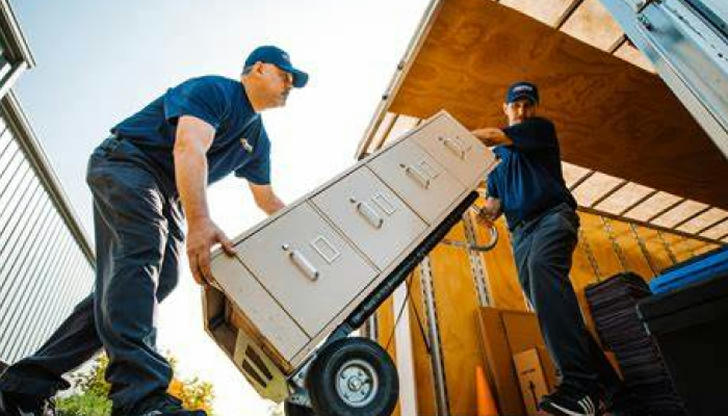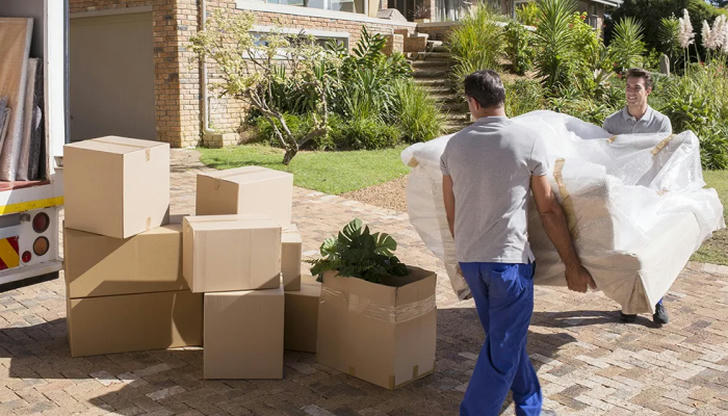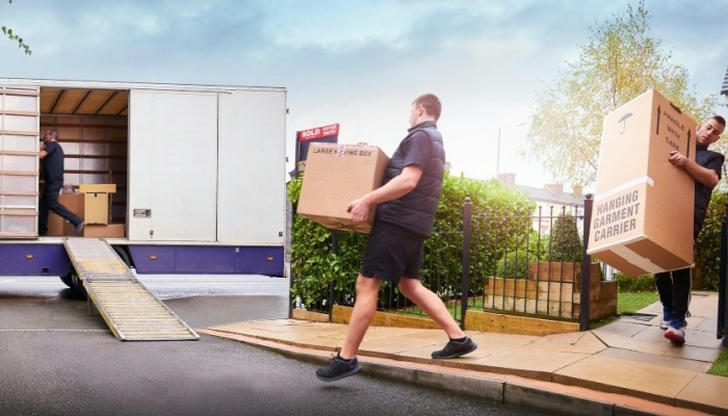Moving Services: A Comprehensive Guide to Relocation
Moving from one place to another can be a daunting task, filled with numerous challenges and logistical hurdles. Whether it's for a job change, a new chapter in life, or simply the desire for a fresh start, the process of relocation requires careful planning and execution. This article aims to provide an informative overview of moving services, highlighting what individuals should consider when choosing a mover, how to prepare for a move, and tips on making the transition as smooth as possible.

Understanding Moving Services
1. What Are Moving Services?
Moving services encompass all activities related to relocating personal belongings from one location to another. Professional movers offer various packages tailored to meet different needs, ranging from small local moves within a city to long-distance interstate relocations. These services typically include packing, loading, transporting, unloading, and unpacking items at the destination. Moreover, some companies provide additional support such as temporary storage solutions, disassembly and reassembly of furniture, and even cleaning services before and after the move. The scope of these services can vary widely depending on the type of move and the specific requirements of the client.
2. Types of Moves
Local Moves:
Usually involve distances within the same metropolitan area or state. They tend to be less complex than long-distance moves but still require attention to detail. Local movers generally have better knowledge of traffic patterns and local regulations, which can help streamline the moving process.
Long-Distance Moves:
Cover greater distances between states or even countries. Such moves often come with additional considerations like customs regulations if crossing international borders. Long-distance movers must adhere to federal and state laws concerning transportation, and they usually have specialized equipment for handling large or bulky items.
International Moves:
Entail moving overseas, which adds layers of complexity such as shipping via sea or air, dealing with customs clearance, and understanding import/export laws. International movers often work with freight forwarders to manage logistics across borders, ensuring that all legal requirements are met.

Selecting the Right Moving Company
1. Research Thoroughly
Choosing a reputable moving company is crucial for ensuring your belongings arrive safely and on time. Start by researching multiple companies online, reading reviews, and checking ratings from sources like the Better Business Bureau (BBB). Look for firms that have been in business for several years and hold proper licenses and insurance coverage. Additionally, consider companies that specialize in specific types of moves—whether local, long-distance, or international—to ensure expertise in the area you need. It's also beneficial to check if the company has any awards or recognitions in the industry, as this can indicate a higher level of service quality.
2. Compare Quotes
Request detailed quotes from at least three different movers. Be wary of unusually low prices, as they might indicate hidden fees or substandard service. Ensure each quote includes everything you need, such as packing materials, labor costs, mileage charges, and any extra services required for special items like pianos or antique furniture. Ask about the terms and conditions, including cancellation policies and what happens in case of delays or damages. It’s important to understand whether the quote is binding or non-binding; a binding quote guarantees the price will not change once agreed upon, whereas a non-binding quote may fluctuate based on actual weight or volume moved.
3. Verify Credentials
Check that potential movers are licensed and insured. In the U.S., interstate movers must register with the Federal Motor Carrier Safety Administration (FMCSA), while intrastate movers may need state-specific licensing. Insurance is equally important; opt for movers who offer full-value protection rather than released value, which only covers a fraction of the item’s worth. Full-value protection means the mover will either repair, replace, or reimburse you for lost or damaged items based on their current market value. Additionally, inquire about liability coverage and whether the company offers any warranties or guarantees on their services.

Preparing for Your Move
1. Create a Timeline
Start organizing early. Establish a timeline with key milestones leading up to moving day. For example:
12 weeks before:
Choose a moving company and book their services. Confirm the date and schedule a walkthrough of your home with the mover to estimate the amount of work involved.
8 weeks before:
Declutter and decide what stays, goes into storage, or gets donated/sold. Organize a garage sale or use online platforms to sell items you no longer need. Donate gently used items to local charities or shelters.
4 weeks before:
Pack non-essential items and label boxes clearly. Use color-coded labels or markers to differentiate between rooms and prioritize items. If you have valuable or fragile items, consider purchasing extra insurance coverage.
1 week before:
Prepare essentials kits containing toiletries, medications, important documents, etc. Make sure to have a first-night box ready with bedding, towels, and basic necessities for immediate use upon arrival.
2. Pack Efficiently
Efficient packing not only saves space but also prevents damage during transit. Use sturdy boxes of appropriate sizes and fill them tightly to avoid shifting contents. Wrap fragile items individually in bubble wrap or packing paper. Label boxes clearly with descriptions and room destinations to facilitate unpacking later. Consider using wardrobe boxes for hanging clothes to keep them wrinkle-free. Also, pack an inventory list of all items being moved, noting down serial numbers and values of expensive electronics or collectibles.
3. Arrange Utilities and Services
Don't forget to arrange for utilities (electricity, water, gas) to be connected at your new home and disconnected at the old one. Similarly, update addresses for mail forwarding, subscriptions, memberships, and other services. Contact utility providers well in advance to ensure a seamless transition without interruptions. Additionally, transfer or cancel internet, cable, and phone services as needed. Set up automatic bill payments or update your billing address to avoid missing any important correspondence.

Tips for a Smooth Transition
1. Stay Organized
Maintain a notebook or digital document listing all tasks, contacts, and information related to your move. Keep receipts and contracts organized for easy reference. Having everything documented will make troubleshooting much easier should issues arise. Consider using apps or software designed for managing moves, which can help track progress and keep all information in one place. Create a master checklist that includes all necessary actions and deadlines to stay on top of things.
2. Communicate Clearly
Keep lines of communication open with your moving company. Provide accurate details about your belongings, especially large or heavy items. Confirm dates, times, and any specific instructions beforehand. Being clear upfront helps prevent misunderstandings and ensures smoother coordination. If there are changes to your schedule or plans, notify the moving company immediately to avoid last-minute complications. Establish a point of contact within the moving company for any questions or concerns that arise during the process.
3. Take Care of Pets and Plants
If you have pets or plants, plan ahead for their safe transport. Some movers do not handle live animals, so you may need to drive them yourself or hire a pet transportation service. Check plant quarantine rules if moving across state lines or internationally. For pets, familiarize them with travel carriers and ensure they have identification tags and updated vaccinations. Make sure to pack enough food, water, and supplies for the journey. If you're moving long-distance, consider arranging overnight accommodations for your pets along the way. For plants, research the best methods for transporting them, such as wrapping pots in plastic or using specialized plant-moving containers.

Special Considerations for Specific Moves
1. Moving with Children
Relocating with children can add an extra layer of complexity. Involve kids in the planning process where appropriate, letting them choose decorations for their new rooms or participate in packing some of their belongings. Explain the move in a way that reassures them and makes them feel part of the adventure. Once at the new location, try to establish routines quickly to provide stability. Plan activities or outings to help children adjust to their new environment and make friends. If the move involves changing schools, visit the new school with your child beforehand to ease the transition.
2. Moving Seniors
For seniors, moving can be particularly challenging due to health concerns and emotional attachments to familiar surroundings. Engage professional senior move managers who specialize in assisting older adults with downsizing and transitioning to new homes. These experts can help sort through possessions, organize medical records, and coordinate transportation. Ensure that the new living space is equipped with necessary accommodations, such as grab bars in bathrooms and ramps for wheelchair access. Arrange for medical equipment and medication to be readily available at the new residence. Offer emotional support throughout the process, acknowledging the difficulty of leaving a longtime home.
3. Moving Businesses
Business relocations require meticulous planning to minimize downtime and maintain productivity. Coordinate with IT professionals to ensure that technology infrastructure is properly set up at the new location. Notify clients, suppliers, and partners of the move well in advance. Plan for employee transitions, including training sessions for new office layouts or systems. Secure reliable commercial movers experienced in handling delicate office equipment and sensitive data. Develop a contingency plan in case of unforeseen delays or issues during the move. Communicate regularly with employees to keep them informed and engaged throughout the relocation process.
Conclusion: Making the Most of Your Move
Relocating doesn’t have to be stressful if you approach it systematically and choose reliable partners along the way. By doing thorough research, preparing adequately, and staying organized, you can transform what could otherwise be a chaotic event into a positive experience. Remember, moving marks the beginning of a new journey—a chance to create memories in a brand-new environment. With the right preparation and support, this transition can indeed become a memorable and rewarding adventure.
In summary, whether you're embarking on a local or international move, taking the time to understand available moving services, selecting a trustworthy provider, and meticulously preparing for the big day are essential steps toward achieving a successful relocation. Moving is more than just transferring belongings from one place to another; it's about creating a new life in a new setting. Embrace the opportunity to explore new places, meet new people, and grow in ways you never imagined. By considering all these factors and tips, you can ensure that your moving experience is as stress-free and efficient as possible, allowing you to focus on settling into your new home and starting this exciting new chapter in your life.
